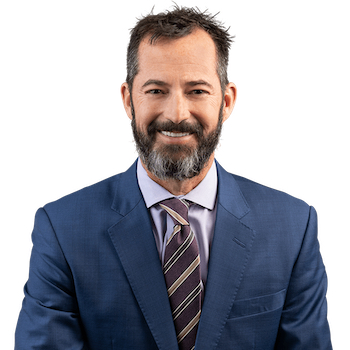
Beware the Black Swan: Forecasting 2023
“It’s tough to make predictions,” Yogi Berra once said, “especially about the future.” Ronald Reagan would agree. He believed in the power of innovation and new thinking to transform the economy in ways that were impossible to predict. The Gipper mocked the inability of economists to predict future growth following the Great Depression: “They left out radio!” It’s the same today with the automobile, the Internet, airlines, and smartphones. It was impossible to predict their arrival or impact just as it is impossible to imagine life today without them.
The past remains the best indicator of the future. “There are no experimental failures,” Max Headroom, the noted late 20th-century philosopher, once said. “There’s only more data.” We can safely consider how past trends will continue into the future. We can also confidently plan for black swan events that we know will come.
Right now, Russia is our black swan. The war in Ukraine has drastically disrupted global energy supplies, European politics, and the global economy. Every action Vladimir Putin has taken in the last 20 years prepared his country to invade Ukraine. Several lessons are already clear. New weapons employed creatively have powerful downrange effects. Older weapons remain indiscriminate and deadly. The war demonstrates how vulnerable we are, especially our cities and infrastructure, to disruption and conflict.
That is our present as rooted in the past. So which future are we preparing for? Let’s look at some long bets.
The global economy will continue to grow
The benefits of growth will spread to more people, improving their quality of life, and raising expectations. The Millennium Challenge has largely succeeded in reducing extreme poverty around the world and progress continues. Health care reaches more people. More children are in school. This forecasts, without guarantee, a better life for billions of people in the coming decades.
But growth has consequences. Inflation driven by the COVID economy threatens years of income gains and savings. Income inequality provokes political and economic destabilization. A growing global middle class increases consumption, waste, and energy use, with devastating environmental consequences.
The world population will increase
The global population has more than doubled since the end of the Second World War. Prior concerns about overpopulation, natural resource competition, and the Malthusian catastrophe proved wrong. Now the greatest economic challenge is not scarcity but plenty. The zombie apocalypse, asteroid impact, or Martian invasion notwithstanding, population growth itself will slow or wane as countries become healthier and more prosperous, as we have seen across the developed world. Global population growth, especially in India, China, and Europe will decline by mid-century. The United States, on the other hand, should maintain population growth through 2100.
The planet will get hotter
Increasing thermal energy in the atmosphere is delivering cataclysms in real time, disrupting climate patterns and aggravating weather events. This will get worse as a growing global economy and population with middle-class needs consume more energy and resources. The race to sustainable energy cannot move fast enough. Jens Stoltenberg, NATO’s secretary general, calls climate change a “crisis multiplier,” exacerbating conflict and insecurity. It will affect production, disrupt supply chains, and damage infrastructure. Melting polar ice will also dramatically affect global trade, ocean navigation, lines of communication, and search and rescue in the Arctic Ocean.
International migration will grow
War, violence, poverty, discrimination, and climate change continue to drive migrants to seek better opportunities in wealthier countries. There are more refugees in the world today than at any time since 1945—and the number has only increased since the mid-1960s. Refugees, displaced persons, and migration empty home countries and strain receiving ones. Mass death in illegal migration is disturbingly common. Ending the refugee crisis will require comprehensive immigration reform, aid for sending countries, prosecuting corruption, and ensuring security.
There will be war and rumours of war
Since the end of the Cold War, the United States and its allies have fought somewhere in the world every five years. As more countries lean into authoritarianism, conflict will increase. When, where, and under what conditions we will intervene is harder to know, but intervention will come.
Military spending will grow
The United States and its allies are already reconfiguring planning and budgets to rapidly field capabilities in Europe. That will be bolstered by the capabilities brought by two new NATO aspirant countries, Finland and Sweden. But our adversaries are similarly girding. Russia’s poor showing in Ukraine, so far, has blunted Putin’s instrument of war and revealed his much-touted military “reform” as boasts and propaganda undermined by incompetence and corruption. If he recovers from this setback and retains political power, he will undoubtedly continue to pursue his vision of a powerful transcontinental Russian empire imposed by force.
Expect the unexpected
Political events, natural disasters, and industrial accidents are black swan events. They are rare, destructive, and grimly consistent. The 1986 Chernobyl nuclear accident irradiated hundreds of square miles but more importantly, destroyed public support for the Soviet Union and the empire’s credibility abroad. The Tohoku earthquake and tsunami did not just devastate Japan, which has planned for natural disasters more comprehensively than any other developed country, it also strangled the nascent nuclear power industry, eliminating an important bridge to carbon-free energy generation with unknown consequences.
That may be a grim note to end with. Ronald Reagan, who lived through the Great Depression, the Second World War, Korea, and Vietnam, remained optimistic. “While I take inspiration from the past,” he once said, “I live for the future.” That’s probably the best way to integrate past experience, known risks, and future potential. We can’t prepare for everything that could come, but we can be prepared.

